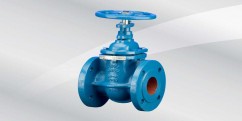You want to delete this!
Go water through more distance and equipment

- Date: 00:00, 25 December, 2019 at 00:00
- Location: ca, ca
- Website: http://
- Type: Exhibition
- Cost: free
Use ball valves with your aquarium when you require to have flow all on or all off only. A ball valve they can be handy where you have equipment plumbed into a return line. If you need to disconnect your equipment it helps to obtain a ball valve that one could shut off, disconnect, and take off the equipment for maintenance or replacing. An example generally is a plumbed media reactor being feed by coming back pump that really needs its media changed. You can simply close the ball valve, disconnect the canister, refill the media, reconnect, and open the valve such as dual wafer check valve to own the reactor ready to go again instantly. If you have a return pump, a ball valve between your sump and pump is nice to obtain to service the pump as you desire. Ball valves doubles in RO/DI systems and in many cases on the end within your hose when filling freshwater containers.
Another great location for ball valves is on the manifold inside your plumbing. An aquarium manifold is normally in line on returning line that will branch to other lines for a number of functions. You never know when you’ll need to get a separate line for any piece of equipment or maybe another plumbed in tank being a frag tank. For a manifold, you can utilize PVC T connections having a ball valve connected over T. When you are available the line simply plumb inside your equipment or second tank and open the valve only when it's ready for operation. Having this plumbed and able to go helps it be easy to add upgrades or modify your system as needed. Keep in mind that in the event you add lines you will need a bigger return pump to go water through more distance and equipment.
One problem that plumbers deal with using a regular basis would be the replacement of old shutoff valves. When installing or replacing a shutoff valve, that you are faced that has a choice: ball valve or gate valve?
Since water inherently wreaks chaos on every aspect of the plumbing system, getting the proper valve in position will help “delay” problems in the future. I use the idea of “delay” rather than “prevent”, for the reason that when it comes to plumbing, problems will ALWAYS arise, it’s just a matter of in how much time. The gate valve 's been around longer, and it is slowly becoming obsolete. The form of the ball valve helps it be vastly more advanced than the gate valve, and is particularly proven to keep going longer and cause less problems.
The weight of segments can be enormous (many tonnes) and then for higher sizes and ratings this may cause valve stems to bend. A last resort could possibly be modification from the design of valve body altogether, and also to consider supporting the gate/segment through an additional arrangement because will require space between gate/segment and valve body. Such a modification incurs additional cost, schedule and risk implications when running projects, and may even not be feasible in any respect.
The API 600 2015 edition mentions that the kind of normal gate valves should ensure correct alignment of gate and stem for everyone orientations. For sizes DN 650 and above, at the very least, wedge guides and the entire body guides are hard-faced allowing the valve to look at any orientation. But then in addition, it talks about manufacturers providing within their installation and operational manual any limitations on account of stem and valve orientation. API 6D doesn't specifically address this problem and dictates for installation and operational manual for valves. Designers should discuss the challenge extensively when obtaining technical clarifications from manufacturers, instead of waiting for not hard to install and operational manual following purchase order.

